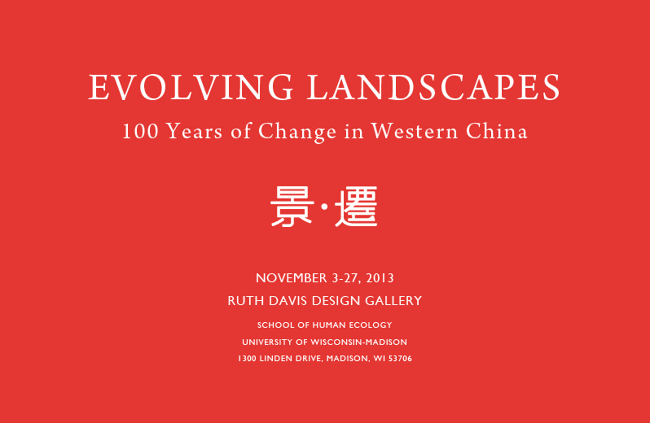
For nearly a decade, Professor Yin Kaipu of the Chinese Academy of Sciences, has traced a 20th century British explorer's footsteps to document and retake his photographs of Chinese landscapes. Yin's work has since been published in a book, Tracing One Hundred Years of Change: Illustrating the Environmental Changes in Western China.
In Ernest Henry Wilson's 1910 expedition he captured 720 images of the Hubei and Sichuan Provinces, while also collected over 1,500 plant specimens as a renowned botanist. Professor Yin Kaipu, also an avid botanist and renowned photographer, researched Wilson's 1910 expedition so meticulously that many of Yin's photographs capture the exact locations Wilson photographed.
Yin's photographs will now appear in a gallery exhibit at the Ruth Davis Design Gallery, titled "Evolving Landscapes: 100 Years of Change in Western China." The exhibit demonstrates the environmental, economic and social changes in Western China by illuminating the impacts of human decisions and development in our environments.
His photographs will now be displayed in an exhibit sponsored by the Nelson Institute for Environmental Studies, the School of Human Ecology, and the Wisconsin China Initiative. The exhibit formally opens on Thursday, Nov. 7 and will continue through Nov. 27 at the Ruth Davis Design Gallery in the School of Human Ecology.
During the formal opening, an all-day China Bridge Symposium will be held with panels discussing the environmental, cultural, and historical changes in Western China. The Symposium will end with a keynote by renowned conservation biologist Peter Raven of the Missouri Botanical Gardens, with a reception to follow at 6:00 PM.
For more information about the exhibit and the Symposium, go here.
Submitted by EALSC News on October 17, 2013
This article appears in the categories: EALSC